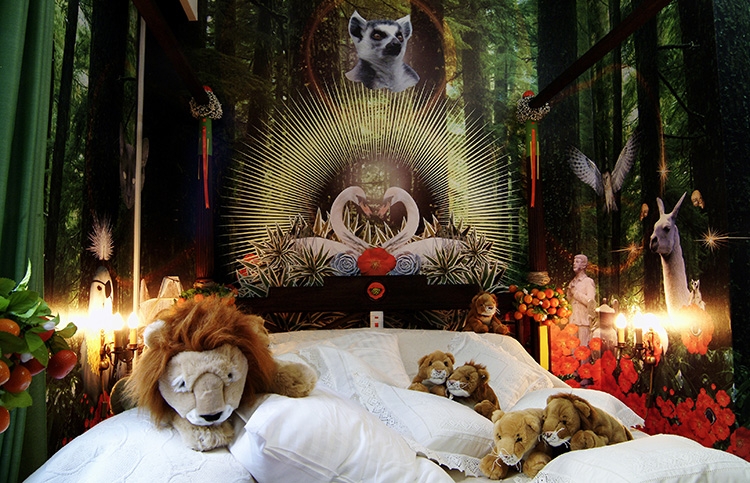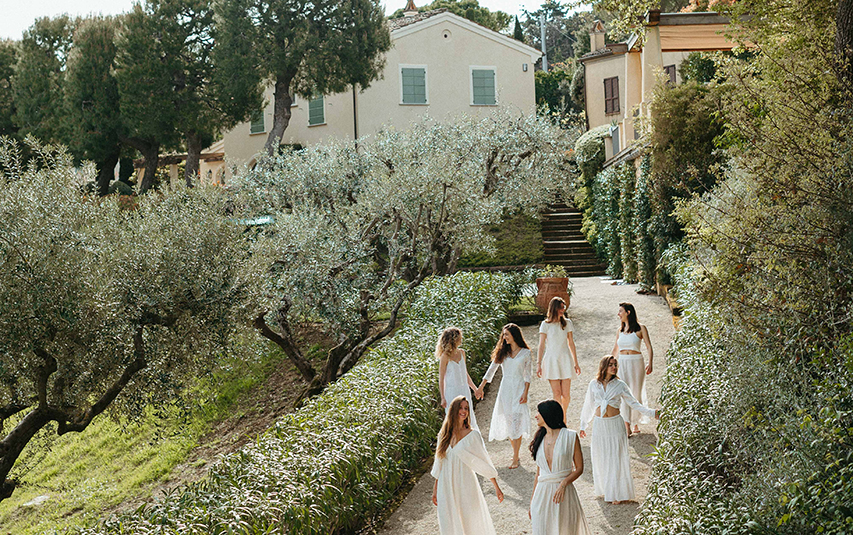Tuscany is the gastronomic Mecca of Europe. The hilly landscape full of rivers, vineyards, and forests has given this region the unique tradition and opportunities ever since the Roman times. Today its historic cities are being choked by millions of tourists who fly from around the globe to try the amazing delicacies and wines, to see the awe-inspiring Cathedrals and to experience the rich tradition of this unique place. This deeply rooted culture is both a blessing and a curse for the Tuscans; on one hand, it brings people who want to stand face to face with Michelangelo’s David or a plate of tortellini tartufata. Yet at the same time it puts a huge environmental, social, and practical strain on the region and its people.
Travelling to Tuscany through the Grampus Heritage EU Erasmus Plus project ‘PRIDE’ (Parternship for Rurali Improvement and Development in Europe), we hoped to witness and understand how people and organisations respond to the challenges of seeking sustainability in a region where a significant amount of the population at any given point is made up of tourists.
The dangers of unlimited, cheap tourism have manifested themselves in Italy. Venice is taking a stand against cruise ships, metallic leviathans that unwantedly threaten to sink La Serenissima. Almost 20 percent of the entire housing stock in the centres of historic cities such as Rome, Florence, or Milan is being rented to tourists. Services like AirBnB displace the locals and force workers (who keep the tourism machine churning) to commute in an already strained public transport system to get to work. In this precarious balance between economic development and environmental conservation, we want to uncover the good practices that shape how tourism transforms once true sustainability becomes an objective.
Our journey started in Pisa, a city famous far and wide for its planned bell tower that started to fall due to soil erosion – a beautiful reminder of the value of mistakes. Pisa in general is not a touristic city; most people pass through for a quick, banal photo of them pushing the tower in place. The University of Pisa, one of the oldest in the world established in 1343, has almost 50,000 students enrolled in a city of 90,000 residents. It carries the vibes of a young city, with bars and restaurants open very late, people talking, drinking, and laughing long after midnight. This lively aura, however, dies around the cathedral. Souvenir shops with mass produced trinkets, tourist traps, and a guy dressed as a sandwich giving out fliers for a nearby Subway prey on the tourists.
One notable way that Italy resists the gentrifying effects of tourism is food. Even the restaurants next to the tower have amazing food and reasonable prices. It appears as though you really have to try to get a bad meal here. This is an example of culinary sustainability – drawing on the culture of traditional recipes, using local ingredients, eating socially, and resulting in undoubted income generation. This experience alone covers all four pillars of sustainability: cultural, environmental, social, and economic.
The next day we visited the ‘city of a hundred churches’, Lucca. Half an hour North of Pisa and dominated by red bricks and towers, this walled, medieval city is incredibly dense, its snaking streets shadowed under a canopy of towers popping up everywhere creating an urban forest of stone. There is almost no vegetation in the city except the ancient oak trees at the top of the Guinigi tower, creating an incredible contrast with the area outside the walls, lush with greenery.
Wood has been almost as important to this region as food. Ever since the Roman times, the wooded hills were cut down to build a navy, causing floods and destruction – a cautionary tale for the predicaments that humanity faces today. Returning to Pisa we visited Ristorante alle Bandierine. You know a place is local when the menu is available only in Italian! One easy way to get Tuscans angry is to ask for spaghetti Bolognese – believe it or not, such recipe does not exist. The Americans came up with it, because the word ‘ragu’ is the opposite of sexy. Nevertheless, most pasterias will refer to the pasta by its American name in an effort to accommodate tourists with an American perspective of Italian food.
On our way out of Pisa, courtesy of our Italian host, CNR-IVALSA (Wood Technology Institute) we got treated to a sneak peak of the Museo delle Navi Antiche (the Museum of Ancient Boats), a museum that brings forth the heritage of the region as well as the effect that human development has had on the environment since ancient times. The archaeological digs outside of Pisa started in 1998 and are referred to as the “Pompeii of the Seas”, uncovering about 30 ships with their full payloads of jewellery, utensils, pottery, amphorae, and coins, dating between the third century BC and seventh A.D.. These boats survived due to a flash flood caused by the cutting down of ancient forests around the river Arno and using the land for farming. The museum brings together not only the archaeological knowledge of a time long gone, but uses modern science and restoration methods. Its team has worked tirelessly to give new life to materials that are not supposed to last two thousand years. This museum set the scene for the rest of our visit, with wood as the central theme. CNR IVALSA, represented by Dr. Nicola Macchioni and Grampus’s Martin Clark, have worked on the Pisa ships from the beginning and still co-operate where wood is on the menu. Past projects have been in Iceland on Viking-Age churches, Finland on ancient loghouses, Slovakia’s wooden churches, and medieval-style field barns in Romania.
We left Pisa and moved to Florence, the grandest city of the region, landscape dominated by Brunelleschi’s domes. We spent the morning in CNR-IVALSA the Wood Technology Institute. From fighting tiny voracious insects to inventing new ways in which wood can be used and its mechanical properties enhanced, scientists work towards the technological development of wood, building, dendrochronology, and preservation of the cultural heritage, as well as protection and valorisation of the forests, assistance for companies, and education and documentation service. A prime example of the necessity for such research is heritage management and protection. Most of the protected buildings in Europe are part wooden. Protecting and replacing parts of a historical site is necessary since wood, being a biological material, responds to the environment and decays over time. Such a project was undertaken on the roof of the Cathedral of Siena, a beautiful building with black and white marble stripes dominating its exterior. The entire timber roof of the cathedral had to be replaced with modern timber to safeguard the building. Perhaps human life is still shaped by our dwindling forests.
Paper is a different contemporary staple that exists due to trees. We visited the Museo della Carta di Pescia (the Paper Museum of Pescia) nested between lush valleys. The building that now houses the museum used to be a paper mill, utilizing the nearby waters to move the equipment to make paper, but is currently being renovated. Artisans created handmade, watermarked paper for some of the largest Italian companies in a time before modernity.
The following day we set out to Montepulciano to visit the Salcheto winery. Known for its vino nobile red wine and championing sustainability. The whole winery is off the grid, employing a variety of methods to produce and minimize the use of electricity – IVALSA’s primary interest through another long-term collaborator with Grampus, Dr. Raffaele Spinelli, is in the bailed vine pruning, full of sugar and a great source of heat energy. Sublime investigated Salcheto almost 10 years ago through the Green Village Initiative, so checking it out after all this time was definitely an experience. Most of the electricity comes through a combination of solar energy and the burning of the vine prunings and other waste produced in the wine making process. Solar tubes are used to illuminate the three levels of the cellar with natural sunlight, making electrical lights obsolete. And, to top it all off, the winery offers breathtaking views of the hills surrounding the area.
On our way back to Florence we had dinner in Ristorante la Bottega di Morello, a small rustic restaurant in the middle of nowhere. The surrounding roads’ main purpose seemed to be keeping tourists out, and so this place has no need to make the traditional dishes more accessible to tourists. Plates like carbonara tartufata with cows’ stomach would definitely get lost in a tourist-oriented restaurant. Our waiter, Luciano, was very proud of their authenticity and their choice to make everything traditional without any new age culinary nonsense.
On our final day, we stopped at the Medici capital of Florence, a city that embodies the renaissance. Yet every square meter is occupied by street artists, people selling tacky stuff, or scammers, the city itself flooded with rivers of people taking photos. One cannot help but wonder how much better it would be if there were less people. The amazing buildings and art are a commodity to be consumed, photographed, and uploaded, farmed for likes and hearts while the people of the city suffer.
This was the overall theme of this trip, a beautiful place facing pressures in all of dimensions of sustainability due to rampant touristic development. Hand in hand with this, resistance grows, creating innovative solutions to bring forward sustainable tourism that marries economic activities with culture and the environment. Striking this balance in a place like Tuscany is hard, but, if successful, it will provide a blueprint that can be adapted across the world.

Participants in the trip to Tuscany Italy travelled on behalf of Sublime Magazine, supported by the EU’s Erasmus Plus programme PRIDE developed by Grampus Heritage, a long-term partner of Sublime. For more information follow us on Twitter.
Other trips by Sublime Magazine include: Slow Santorini, Emerging Bulgaria
















